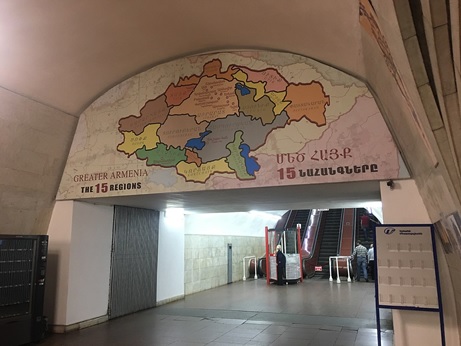
On 27 September, fighting has erupted once more between Armenia and Azerbaijan over Nagorno-Karabakh and 7 adjacent districts, which are internationally and legally recognized as part of Azerbaijan but illegally occupied by Armenia since the early 1990s.
The rapid advances made by Azerbaijan and significant losses suffered by the Armenian Army stunned Armenian Prime Minister Pashinyan whose increasingly erratic behavior and poor leadership became particularly visible in the reactions he has so far given. Prime Minister Pashinyan and other government spokespersons were repeatedly seen making wild and sensationalist claims, eerily in tune with the notion of “fake news” over the recently flared-up military conflict in Nagorno-Karabakh in order to attract the attention of the world leaders. In phone call after phone call with the world leaders and representatives of the international community, Pashinyan repeatedly asked for the intervention of the outsiders to halt the progress of the Azerbaijani army, and made sensationalist and inflammatory claims to influence the world public opinion against Azerbaijan and Turkey.
Speaking to a Russian State TV channel on 29 September, Pashinyan claimed it was not Armenia but Azerbaijan that had attacked Armenia and reignited the conflict despite the obvious signs to the contrary and went on to throw accusations that the Turkish Army and Turkish fighter jets were in Azerbaijan and it was them who were conducting and waging the fighting against Armenia. More astoundingly, Pashinyan even claimed that jihadist fighters were deployed from Syria to Azerbaijan and that “there is information that there have already been clashes between the mercenaries and Azerbaijani locals in some of the Azerbaijani settlements, because the mercenaries try to introduce Sharia law in those villages. They enter shops and force to stop selling alcohol.”[1]
A day earlier Armenia’s state owned news agency ArmenPress ran the same story “according to the Free Azerbaijan website,” a website which is universally recognized as a fake news outlet par excellence.[2] Even journalists and analysts sympathetic to Armenian cause called out Pashinhyan for this obvious deception. After summarizing Pashinyan’s claims over the alleged imposition of sharia law in Azerbaijan, Joshua Kucera noted that “his [Pashinyan’s] source appears to be this fake news site” and cited the notorious “freeazerbaijan” website.[3] There could be no doubt that Pashinyan’s allegations are baseless. Azerbaijan is a Shia-Muslim country and by default the Salafi-Jihadists consider Shia Muslims as apostates that ought to be liquidated. Thus, the idea of these fundamentalists groups fighting for Azerbaijan or Azerbaijan inviting them to their country as alleged by Pashinyan is doubly absurd and undoubtedly serves to inflame the Western world against both Azerbaijan and Turkey to obtain support or intervention on the side of Armenia.
Rehashing accusations against both Azerbaijan and Turkey, Pashinyan next spoke to the BBC in a short phone call interview that once again displayed his creative imagination. Despite the limited scope Azerbaijani military operations seeking to restore Azerbaijan’s sovereignty over its own and legitimate territories, Pashianyan claimed that the Republic of Armenia and all Armenian people are facing an existential threat. He once again reiterated his implausible claims that the Turkish Army and F-16 jets were in Azerbaijan and that Turkey itself was directly involved in the military operations. He also repeated the rather fantastic accusation that Turkish F-16s shot down an Armenian SU-25 Jet within the airspace of the Republic of Armenia. When the BBC interviewer confronted Pashinyan over the downing of an Armenian jet by Turkish F-16s and the involvement of Turkey’s military involvement, asking whether Pashinyan has any “evidence” and noting that Ankara firmly rejected the accusation, Pashinyan, in response, could not come up with any concrete evidence but merely repeated his accusations without any evidence: “for example, Turkish fight jets F-16s just now are flying over Nagorno-Karabakh and fully involved in the military actions.”[4] To put it mildly, Pashinyan, thus, had nothing other than his word.
In the modern world, it is impossible to fly fighter jets without being detected by radars and without leaving traces of heat signals thanks to advanced radar systems. Even though it’s been more than 8 days since Armenia claimed that its jets were downed by Turkish F-16s, so far it could not reveal any concrete evidence or any indication at all (beyond verbal abuse and accusation) such as radar logs or a video footage or a forensic report of the downed jet’s wreckage to prove that it was shot down by the Turkish F-16s inside the Armenian airspace.
Unsatisfied and disappointed with the results achieved via spreading fake news about Azerbaijani or inventing stories about imaginary Turkish F-16s freely touring the Armenian airspace and downing Armenian jets, provocations by Armenian leaders directed at Azerbaijan increasingly took more desperate and violent forms that involved targeting civilians and civil infrastructures such as the hydro energy stations or pipelines far away from the conflict zone in Nagorno-Karabakh region. The obvious goal of all these provocations is to push Azerbaijan to take retaliatory actions against the Republic of Armenian and thereby to force a Russian intervention on Armenia’s behalf. The reason for this line of thinking lies in the so far neutral attitude of the Russian state officials to the military conflict in Nagorno-Karabakh. Russian President Vladimir Putin and his spokesperson Dmitry Peskov reiterated several times that while Russia upholds her guarantee to maintain the territorial integrity of Armenia, they do not view Nagorno-Karabakh and its adjacent districts under Armenian occupation as part of the Republic of Armenia and therefore will not be involved in the current conflict. Commenting on this, Russian political analyst Sergei A. Markov remarked that “Armenia is trying in every possible way to provoke Russia and drag it into the conflict.” Toward that end, Armenia seeks to “expand the geography of military operations. They provoke Azerbaijan to strike on their territory.”[5]
Azerbaijan has lost scores of civilians and suffered significant damages to its civilian infrastructures and residential areas. In the face of these blatant acts of provocation, Azerbaijan has showed remarkable restraint and avoided taking retaliatory steps against the Republic of Armenia. Yet despite this, Armenian Prime Minister Pashinyan has kept exclaiming that all Armenians in the Caucasus face an existential threat and total destruction. However, this display of arrogant and blind self-righteousness on the part of Armenia clouds what the question is all about. It is most significant to remember that Armenia itself is not being attacked here. Azerbaijan so far has not even thrown a single stone to Armenia. All the fighting takes places inside the legally and internationally recognized Azerbaijani territories and there is the Armenian army, supported by guerillas and terrorists from other countries, invading those Azerbaijani territories. On top of all these, Armenia regularly launches missiles from mainland Armenia into Azerbaijan. Yet, Pashinyan has the nerve to present himself and Armenia as the main victim here.
But there is not much point in bothering to reply to Pashinyan and refute his provocative and baseless allegations. These attitudes represent a fairly consistent line with the strategies of the Armenian leadership over the previous century and a half, which were consistently based on a policy of inciting violence calculated to draw reprisals against Armenians and trigger international intervention on their behalf. When one examines the historical antecedents of this strategy, it becomes easier to understand the logic behind Pashinyan’s remarks and detect the continuities in the process.
Ever since the emergence of the major Armenian revolutionary committees, the Hunchak Party and the Dashnaktsutyun (the Dashnak Party/Armenian Revolutionary Federation), in the late 19th century, the central goal of the leadership of these committees, seeking autonomy and independence, was to create disturbances in the Ottoman Empire that would invite foreign intervention and result in political gains for the Armenians such as achieving autonomy or independence.
From the very beginning, the obvious goal of these committees was to invite foreign intervention by engaging in countless acts of terrorism which, they expected, would provoke conflicts between the Armenian minority and the Muslim majority in Anatolia. A British consul noted that
“their object has plainly been, by creating an appearance of widespread disaffection, quite out of proportion to their numbers and influence to provoke reprisals on the part of the Turkish Government and people, of a nature to draw the attention of the Powers to the manifest grievances of the Armenian nation, and the necessity for their redressal.”[6]
It was not only the foreign observers but the revolutionaries themselves that openly admitted this strategy. A Hunchak member told an American missionary the following:
“A very intelligent Armenian gentleman, who speaks fluently and correctly English as well as Armenian, and is an eloquent defender of the revolution, assured me that they have the strongest hopes of preparing the way for Russia’s entrance to Asia Minor to take possession. In answer to the question how, he replied: ‘These Huntchagist bands, organized all over the empire, will watch their opportunities to kill Turks and Kurds, set fire to their villages and then make their escape into the mountains. The enraged Moslems will then rise and fall upon the defenseless Armenians and slaughter them with such barbarities that Russia will enter in the name of humanity and Christian civilization and take possession.’ When I denounced the scheme as atrocious and infernal beyond anything ever known, he calmly replied: ‘It appears so to you, no doubt, but we Armenians are determined to be free. Europe listened to the Bulgarian horrors and made Bulgaria free. She will listen to our cry when it goes up in the shrieks and blood of millions of women and children’.”[7]
Similarly, the strategy of the Dashnaktsutyun also rested on terror and European intervention. As a lifelong Dashnak member put it:
“The purpose of the Armenian movement has been, from the beginning, to organize as far as possible a long drawn-out fight against the Ottoman tyranny, to create in the country a continuous revolutionary state, always having before our eyes the intervention of the third factor ... the European factor.”[8]
Placing hopes on European intervention and sacrificing Armenian lives in the process was a naive belief. For one thing, the European Great Powers would only intervene if their political interests necessitated that and not because of the sympathy for the Armenians. Countless reports from 1890s mention the attacks and killings directed at the Muslim population by these committees that resulted in Muslim retaliation against the Armenians. Specific sites such as mosques during and after Friday prayers were chosen for these attacks in order to create the greatest possible indignation among the Muslims. In the fall of 1895, the Armenian revolutionaries fired shots on the crowds at the Friday prayer sermons in Bitlis and Diyarbakır. In the ensuing fight, 120 Armenians and 30 Muslims lost their lives but the loss of life among the Armenians presented the committees the opportunity to propagate the Armenian cause to the European public opinion and this was what the committees wanted. In Erzurum, the British Consul reported in October 1895 that “the Armenian Revolutionary Committees have recently sent agents to these parts from Russia and Constantinople via Trebizond [Trabzon], with the undoubted object of provoking disturbances,” and added that this was the reason behind the so-called disturbances in the region.[9] There were countless similar consular reports from this period, attesting to the provocations of these Armenian committees seeking outside intervention. Throughout 1894-96, Eastern Anatolia witnessed violent rebellions in Sasun, Erzurum, Van and other places that aimed to bring about a foreign intervention but these attempts spectacularly failed and resulted only in diminishing or destroying the mutual trust and respect among the Armenians and Muslims of Eastern Anatolia. Not satisfied with the results achieved in Anatolia, the Dashnaks next turned their attention to the capital and carried out their notorious raid of the Ottoman Bank in 1896, and prepared a list of demands and presented them to European embassies in the Istanbul, for the obvious reason of getting the European Powers involved in the Armenian Question.[10]
When the first wave of rebellions and acts of terror failed between 1894 and 1896, the Dashnaks tried their luck for a second major rebellion in Sasun in 1904. With the local Armenians aided by the Dashnaks infiltrating from Iran and Russia, the Dashnaks led by the infamous guerilla leader Andranik Ozanian were able assemble a large force in the Sasun-Muş region. Hoping to draw reprisals against the Armenians, they began attacking the Muslim villages in the area. But, having gained experience during 1894-1896, the Ottoman Army this time acted more effectively and prevented large clashes between the Armenians and Muslims and kept the nomadic tribes in the area under check. But as happened so often, the European and American press were filled stories of Armenian massacres in Sasun. But Captain Tyrell, the British Consul in the area, investigated the events diligently and concluded that “considering all the circumstances, it would be difficult to sustain charges of massacre and atrocities.”[11] Similarly the leader of the uprising Andranik Ozanian himself admitted that the Dashnak fedais “created the lie that 7000 people were massacred [in Sasun] by using a list of fake names in order to submit these to the [European] Embassies.”[12]
With the proclamation of the Ottoman constitution and the parliamentary rule in 1908, the Dashnak and Hunchak activities temporarily halted. But following the Ottoman defeat at Balkan Wars of 1912-1913, the Armenian committees, mistakenly believing that the Empire would collapse soon, once again began their policy of provocation and foreign intervention.
With assassination of prominent Kurds and government officials and of Armenians loyal to the Ottoman Government, and the importation of large number of arms from abroad, the Armenian committees were once again working toward creating disturbances and bloodshed that would compel Great Powers to intervene from late 1912 onwards. To complement these efforts further, the committees, supported by the Armenian Patriarch, also sent delegations to London, Paris, St. Petersburg, Berlin, Vienna, and Rome, hoping to influence the leaders of the Great Powers in favor of Armenians. Of these efforts to involve European Powers, an Ottoman minister reportedly complained that “nowhere in the world can you find a people which seeks intervention of foreigners … by running from one capital to another.”[13] This is remarkable not only for the fact that Ottoman leaders knew all too well about the activities and intentions of the Armenian leaders, but also for the striking resemblance to President Ilham Aliyev’s complaint that Pashinyan seeks the intervention of outsiders in phone call after phone call with the leaders of the other countries.
When the First World War started, the Armenian leaders once again placed their bets on the foreign intervention to achieve autonomy and independence and engulfed their peoples and their Muslim neighbors in a huge tragedy in 1915, but still could not achieve the much wanted independence from the Ottomans.
After the war, when the Allied Powers occupied the Ottoman capital and other strategic places in 1919 and actively began preparations for dividing up its territories, the newly independent Armenian Republic in the Caucasus took advantage of the Ottoman defeat and invaded Eastern Anatolia. When forces under Kazım (Karabekir) Pasha liberated Eastern Anatolia, recapturing Erzurum and Kars and other regions, the Armenians once resorted to vicious propaganda, falsely claiming that Armenians were being massacred because of Turkish operations. Rear Admiral Mark L. Bristol, the US High Commissioner in Istanbul complained about the circulation of such news to Dr. James L. Barton, the head of American Board of Commissioners for Foreign Missions:
“I see that reports are being freely circulated in the United States that the Turks massacred thousands of Armenians in the Caucasus. Such reports are repeated so many times it makes my blood boil. The Near East Relief have the reports from Yarrow and our own American people which show absolutely that such Armenian reports are absolutely false. The circulation of such false reports in the United States, without refutation, is an outrage and is certainly doing the Armenians more harm than good. I feel that we should discourage the Armenians in this kind of work, not only because it is wrong, but because they are injuring themselves. In addition to the reports from our own American Relief workers that were in Kars and Alexandrople, and reports from such men as Yarrow, I have reports from my own Intelligence Officer and know that the Armenian reports are not true. Is there not something that you and the Near East Relief Committee can do to stop the circulation of such false reports?”[14] [Emphasis added].
In response, Dr. Barton wrote to Admiral Bristol that the Armenian propaganda circles and in particular a well-educated Armenian by the name of Vahan Cardashian (no relation to Kim Kardashian) was the source of all these false accusations and fake news:
“With reference to the false reports that come through reporting massacres of the Armenians by the Turks, there is no one who can deprecate this more than I do... There is a brilliant young Armenian, a graduate of Yale University, by the name of Cardashian. He is a lawyer, with office down in Wall Street, I believe. He has organized a committee, so-called, which has never met and is never consulted, with Mr. Gerard as Chairman. Cardashian is the whole thing. He has set up what he calls an Armenian publicity bureau or something of that kind, and has a letterhead printed. Gerard signs anything that Cardashian writes. He told me this himself one time. Cardashian is out with his own people and with everybody else, except Gerard and perhaps one other leading Armenian who was in London a month ago, Pasdermadjian… He claims to have the latest and fullest information out from Armenia and keeps in pretty close touch with Senator Lodge, the President, the State Department, and others in Washington. He has Gerard’s backing. We have had many a conference with Armenian leaders as to what can be done to stop this vicious propaganda carried on by Cardashian. He is constantly reporting atrocities which never occurred and giving endless misinformation with regard to the situation in Armenia and in Turkey. We do not like to come out and attack him in public. That would injure the whole cause we are all trying to serve...”[15] [Emphasis added].
Thus the idea of throwing false accusations and made-up stories to portray their opponents in as dark a picture as possible, such as the involvement of foreign mercenaries or imaginary Turkish jets going inside Armenian airspace and shooting down Armenian jets, has clear antecedents in the conflicts involving Armenia.
Conclusion
Historically, Armenian leaders founded their strategy on relying Great Powers’ intervention on their behalf in order to achieve concessions or other political or territorial gains from their opponents, and modern Armenian leaders carry on this traditional strategy. This continuity with the past is clearly visible in the recent military conflict over Nagorno-Karabakh. Azerbaijan did not initiate the recent military conflict and certainly did not attack Armenia or invade its territories. Azerbaijan is merely trying to restore its sovereignty over its internationally recognized territories against an occupying army and it houses close to million refugees ethnically cleansed by the invading Armenian army. Yet, Armenian Prime Minister Pashinyan has repeatedly attempted to portray Azerbaijan as the unquestionable aggressor and Armenia as the victim. In the process, Pashinyan has benefited a great deal from spreading fake news and baseless accusations in order to make his claims more credible.
Despite Pashinyan’s claims, neither Azerbaijan nor Turkey has any territorial demands from the Republic of Armenia. By contrast, Pashinyan has himself remarked famously and with insulting provocation to Azerbaijanis that Nagorno-Karabakh, the internationally recognized territory of Azerbaijan, is Armenian. Armenia’s Constitution (via its mention of the Armenian Declaration of Independence) still refers to eastern Turkey as “Western Armenia” and its politicians and leaders routinely speak of “recapturing” the so-called “Western Armenia and Mount Ararat.”[16] Today, a major metro station in Yerevan proudly displays Armenia’s ambitions for a Greater Armenia in the form of a map, showing Armenian claims to the territories of Azerbaijan, Turkey, Georgia, and Iran.
At brief points in history and for a short term, the policy of relying on foreign intervention might bring Armenians certain benefits, but the costs at which Armenians achieve these benefits ultimately haunt them in the coming years and the Armenian people end up suffering from this. Unfortunately, the Armenian leaders seem to have not learned the lessons of history and still stubbornly insist on maintaining their policy of provocation and aggression. When reflecting on the tragedies that engulfed the region almost a century ago, Hovhannes Katchaznouni, the first President of the Republic of Armenia, admitted with stark honesty that:
“We overestimated the ability of the Armenian people, its political and military power, and overestimated the extent and importance of the services our people rendered to the Russians. And by overestimating our very modest worth and merit we were naturally exaggerating our hopes and expectations.”[17]
Katchaznouni’s observations are quite relevant and fitting for the position that Nikol Pashinyan has placed himself into today. In the end, it is neither the Armenian people of the Caucasus nor the Republic of Armenia, but rather the political careers of the ruling elite that faces an existential threat.
*Picture: A map in a Yerevan metro station, displaying the territories of Azerbaijan, Turkey, Georgia, and Iran as part of a “Great Armenia.”
[1] “International community must force Turkey to abandon South Caucasus – PM Pashinyan,” ArmenPress, September 29, 2020, https://armenpress.am/eng/news/1029503/
[2] “Sharia Law, chaos and looting against Azerbaijani citizens –Baku’s plan to hire jihadists implodes,” ArmenPress, September 28, 2020, https://armenpress.am/eng/news/1029205/
[3] Joshua Kucera, “Pashinyan tells Russian state TV that Syrian mercenaries are already imposing sharia law in Azerbaijan… His source appears to be this fake news site…,” Twitter profile, September 30, 2020, https://twitter.com/joshuakucera/status/1311185051426709504
[4] “‘Nagorno-Karabakh & Armenia are facing an existential threat’," BBC, July 28, 2020, https://www.bbc.co.uk/sounds/play/p08sw5px
[5] “Baku and Moscow are Well Aware of Armenian’s Provocations,” Report.az, October 4, 2020, https://report.az/en/nagorno-karabakh-conflict/russian-political-scientist-sergei-markov-commented-on-the-shelling-of-the-second-largest-azerbaijani-city-of-ganja-from-armenia/
[6] FO 424/181, Consul R.W. Graves to Sir P. Currie, January 28, 1895.
[7] Cyrus Hamlin, “A Dangerous Movement Among the Armenians,” The Congregationalist, December 28, 1893.
[8] K. S. Papazian, Patriotism Perverted: A discussion of the deeds and the misdeeds of the Armenian Revolutionary Federation, the so-called Dashnagtzoutune (Boston: Baikar Press, 1934), p. 21.
[9] FO 424/184, Herbert to Salisbury, October 26, 1895.
[10] Reşat Kasaba (ed.), Cambridge History of Turkey, Vol. 4 (New York: Cambridge University Press, 2008), p. 55.
[11] FO424/206, O’Connor to Landsdowne, 9 Jul. 1904.
[12] Antranig Çelebyan, Antranik Paşa (İstanbul: Peri Yayınları, 2003), p. 112.
[13] Guenter Lewy, The Armenian Massacres in Ottoman Turkey: A Disputed Genocide (Salt Lake City: University of Utah Press, 2005), p. 36.
[14] U.S. Library of Congress: “Bristol Papers,” General Correspondence, Container #34. Admiral Bristol to Dr Barton, March 28, 1921.
[15] U.S. Library of Congress: “Bristol Papers,” General Correspondence, Container #34. Dr Barton to Admiral Bristol, May 6, 1921.
[16] Serj Sarkisian, the former Prime Minister of Armenia, for example, boasted about his generation’s conquering Nagorno-Karabakh and advised young generation of Armenian students to do the same for the so-called Western Armenia. See: “Sarkisyan ne demişti?” Hürriyet, August 7, 2011, https://www.hurriyet.com.tr/sarkisyan-ne-demisti-18437012
[17] Hovhannes Katchaznouni, The Armenian Revolutionary Federation (Dashnagtzoutiun) Has Nothing to Do Anymore (New York: Armenian Information Service, 1955).
© 2009-2025 Center for Eurasian Studies (AVİM) All Rights Reserved
No comments yet.
-
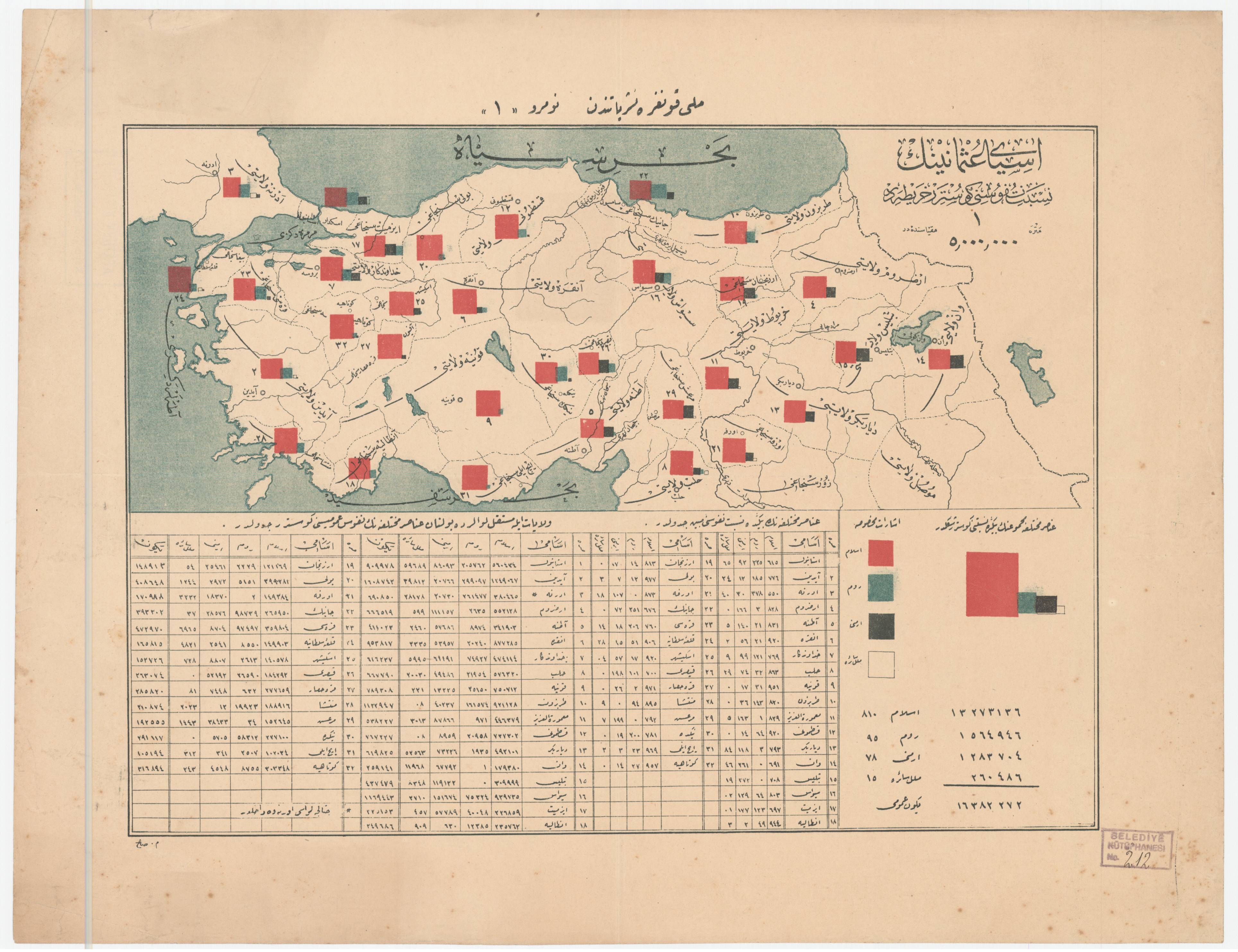 STATISTICAL INFORMATION REGARDING OTTOMAN ARMENIANS AND FOREIGN RESOURCES
STATISTICAL INFORMATION REGARDING OTTOMAN ARMENIANS AND FOREIGN RESOURCES
AVİM 25.10.2021 -
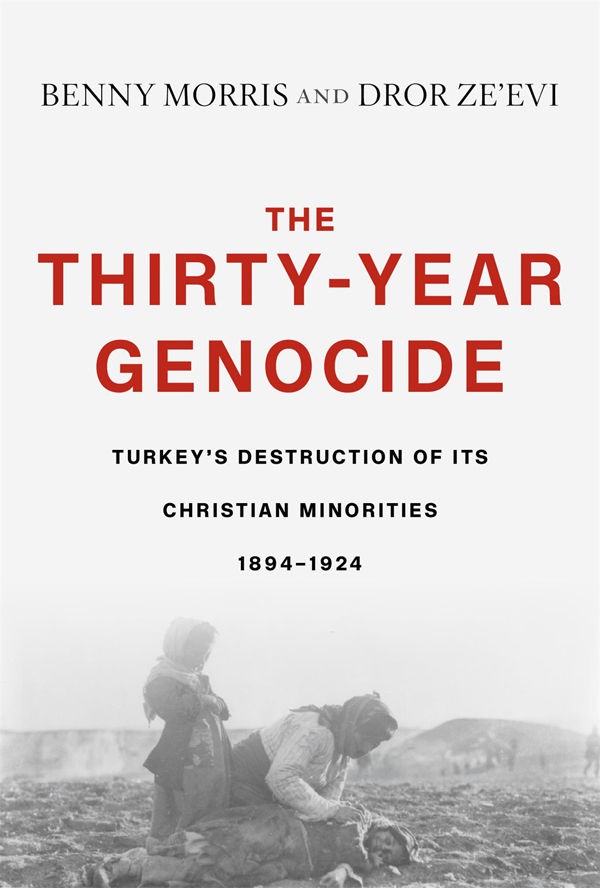 BOOK REVIEW: THE THIRTY-YEAR GENOCIDE
BOOK REVIEW: THE THIRTY-YEAR GENOCIDE
AVİM 21.08.2019 -
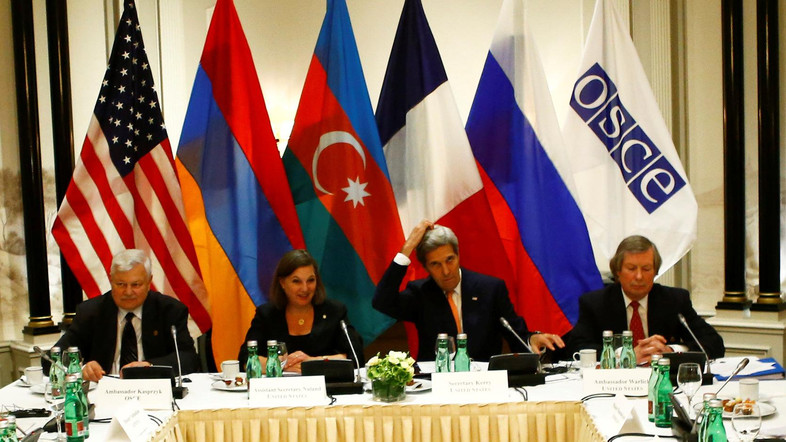 “QUIET DIPLOMACY” IN NAGORNO KARABAKH CONFLICT AND ARMENIAN ELECTIONS
“QUIET DIPLOMACY” IN NAGORNO KARABAKH CONFLICT AND ARMENIAN ELECTIONS
AVİM 24.04.2018 -
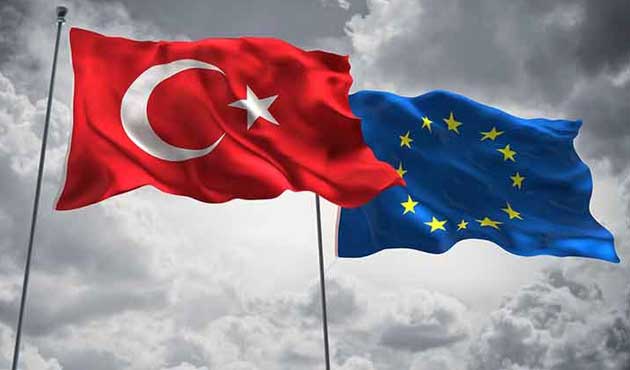 EU'S INCORRIGIBLE BIAS AND ANTAGONISM AGAINST TURKEY HAS BEEN REVEALED
EU'S INCORRIGIBLE BIAS AND ANTAGONISM AGAINST TURKEY HAS BEEN REVEALED
AVİM 21.09.2020 -
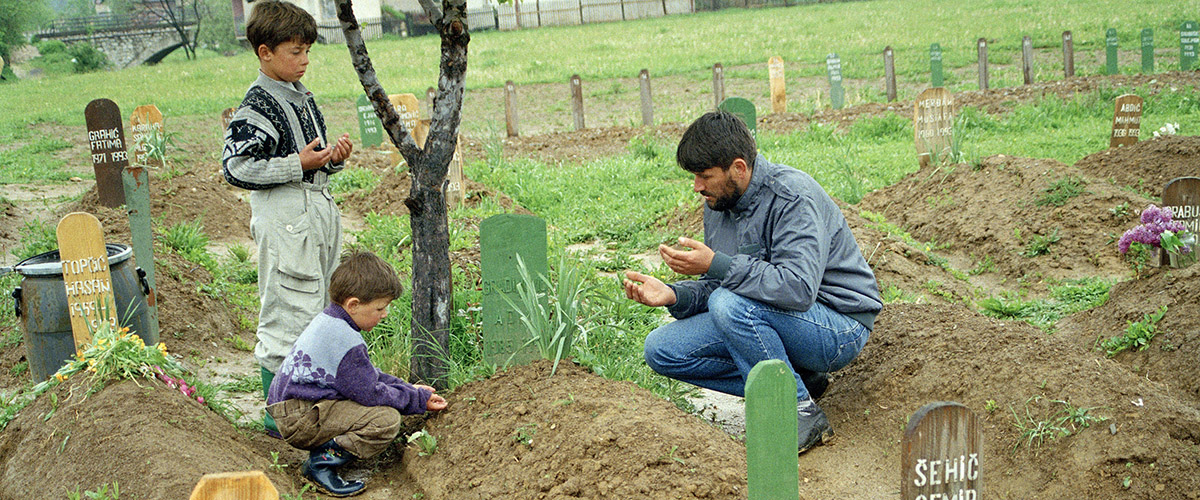 WE ARE LOOKING FORWARD TO A WORLD FREE FROM THE CRUEL AND ODIOUS CRIME OF GENOCIDE
WE ARE LOOKING FORWARD TO A WORLD FREE FROM THE CRUEL AND ODIOUS CRIME OF GENOCIDE
AVİM 18.12.2017
-
 COMMEMORATION OF THE 100TH ANNIVERSARY OF THE 1915 EVENTS AT ST. PETER’S BASILICA
COMMEMORATION OF THE 100TH ANNIVERSARY OF THE 1915 EVENTS AT ST. PETER’S BASILICA
Ali Murat TAŞKENT 21.04.2015 -
 UZBEKISTAN’S REGIONAL POLICIES UNDER NEW PRESIDENT: A NEW ERA?
UZBEKISTAN’S REGIONAL POLICIES UNDER NEW PRESIDENT: A NEW ERA?
Özge Nur ÖĞÜTCÜ 18.08.2017 -
 BOOK REVIEW: AZERBAIJAN DIARY: A ROGUE REPORTER'S ADVENTURES IN AN OIL-RICH, WAR-TORN, POST-SOVIET REPUBLIC
BOOK REVIEW: AZERBAIJAN DIARY: A ROGUE REPORTER'S ADVENTURES IN AN OIL-RICH, WAR-TORN, POST-SOVIET REPUBLIC
Nigar SHİRALİZADE 20.07.2018 -
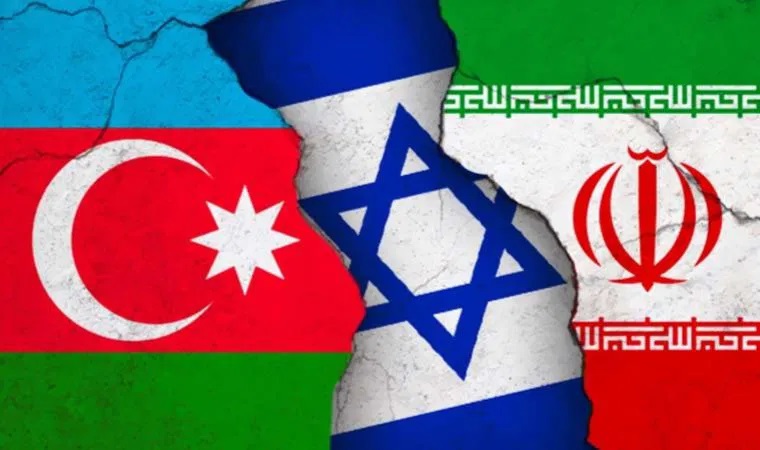 OVERLAPPING INTERESTS IN THE SOUTH CAUCASUS: THE AZERBAIJAN, ISRAEL AND IRAN TRIANGLE
OVERLAPPING INTERESTS IN THE SOUTH CAUCASUS: THE AZERBAIJAN, ISRAEL AND IRAN TRIANGLE
İlaha KHANTAMİROVA 29.05.2025 -
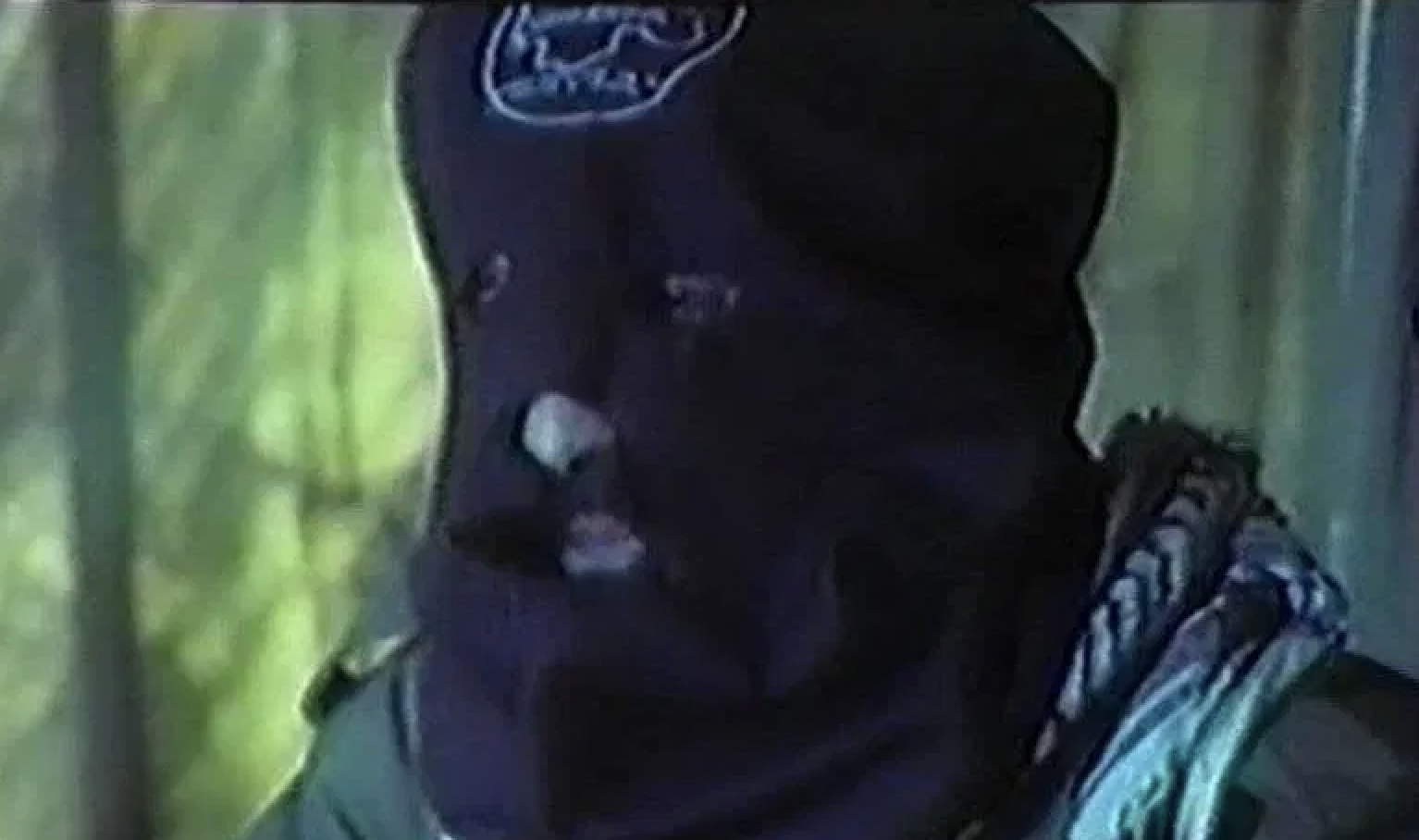 ARMENIAN TERRORISM BEGINS TO SHOW ITS FACE AGAIN
ARMENIAN TERRORISM BEGINS TO SHOW ITS FACE AGAIN
Hazel ÇAĞAN ELBİR 04.02.2021
-
25.01.2016
THE ARMENIAN QUESTION - BASIC KNOWLEDGE AND DOCUMENTATION -
12.06.2024
THE TRUTH WILL OUT -
27.03.2023
RADİKAL ERMENİ UNSURLARCA GERÇEKLEŞTİRİLEN MEZALİMLER VE VANDALİZM -
17.03.2023
PATRIOTISM PERVERTED -
23.02.2023
MEN ARE LIKE THAT -
03.02.2023
BAKÜ-TİFLİS-CEYHAN BORU HATTININ YAŞANAN TARİHİ -
16.12.2022
INTERNATIONAL SCHOLARS ON THE EVENTS OF 1915 -
07.12.2022
FAKE PHOTOS AND THE ARMENIAN PROPAGANDA -
07.12.2022
ERMENİ PROPAGANDASI VE SAHTE RESİMLER -
01.01.2022
A Letter From Japan - Strategically Mum: The Silence of the Armenians -
01.01.2022
Japonya'dan Bir Mektup - Stratejik Suskunluk: Ermenilerin Sessizliği -
03.06.2020
Anastas Mikoyan: Confessions of an Armenian Bolshevik -
08.04.2020
Sovyet Sonrası Ukrayna’da Devlet, Toplum ve Siyaset - Değişen Dinamikler, Dönüşen Kimlikler -
12.06.2018
Ermeni Sorunuyla İlgili İngiliz Belgeleri (1912-1923) - British Documents on Armenian Question (1912-1923) -
02.12.2016
Turkish-Russian Academics: A Historical Study on the Caucasus -
01.07.2016
Gürcistan'daki Müslüman Topluluklar: Azınlık Hakları, Kimlik, Siyaset -
10.03.2016
Armenian Diaspora: Diaspora, State and the Imagination of the Republic of Armenia -
24.01.2016
ERMENİ SORUNU - TEMEL BİLGİ VE BELGELER (2. BASKI)
-
AVİM Conference Hall 24.01.2023
CONFERENCE TITLED “HUNGARY’S PERSPECTIVES ON THE TURKIC WORLD"









